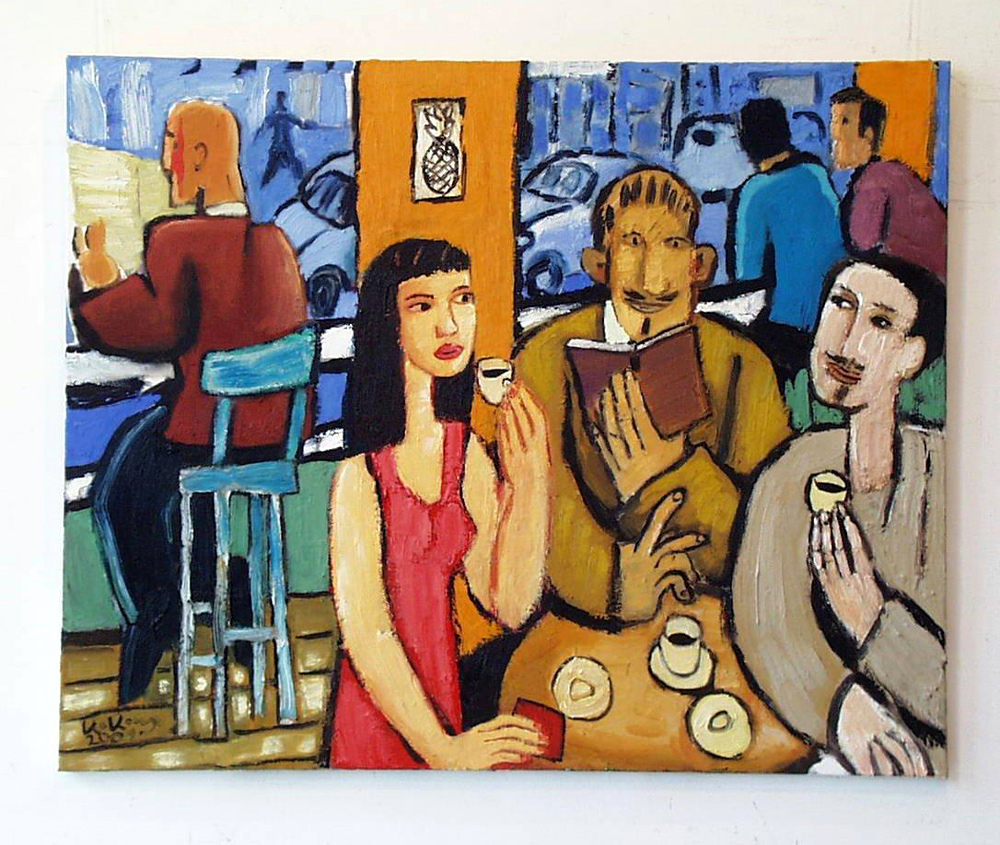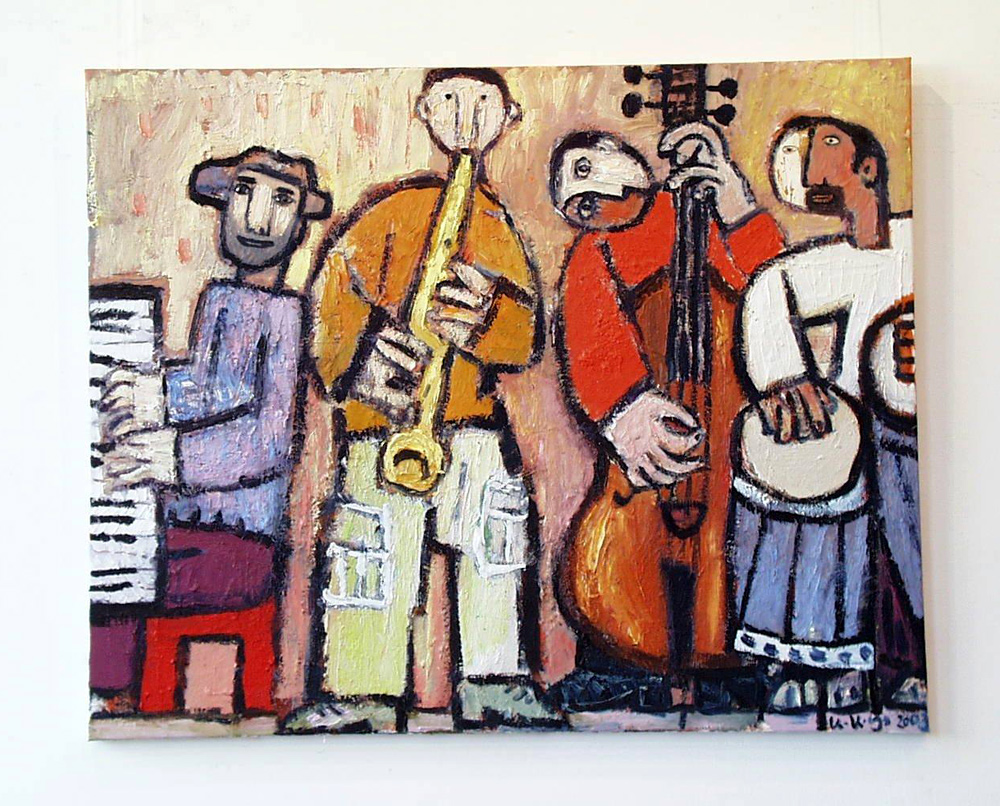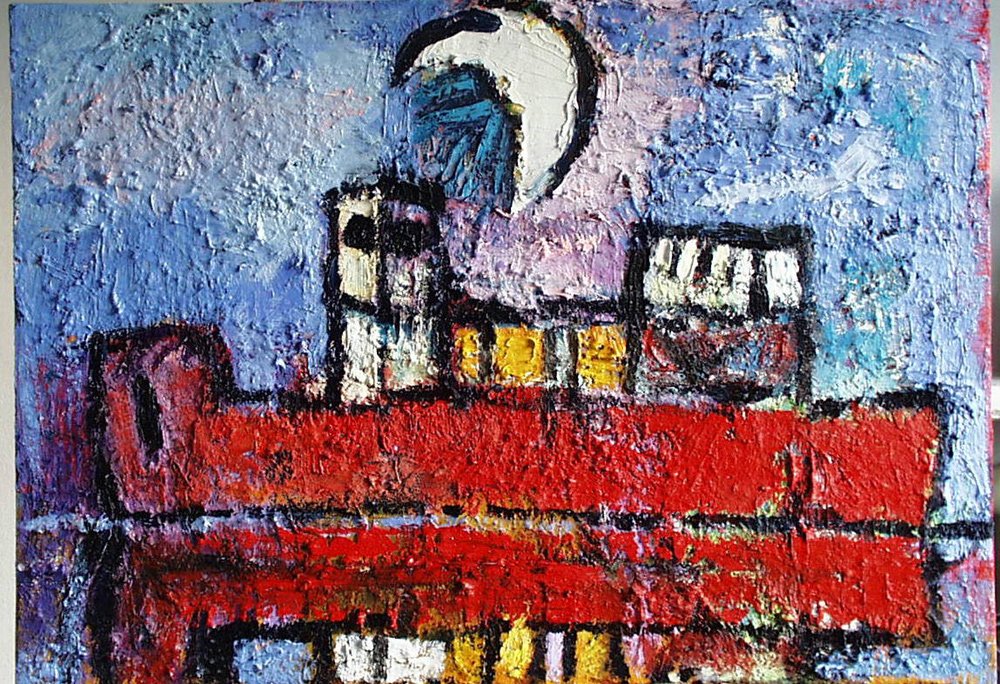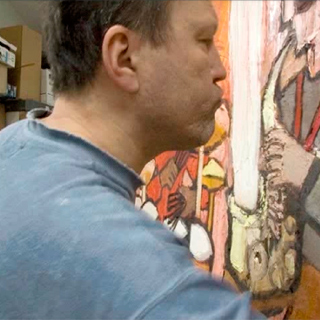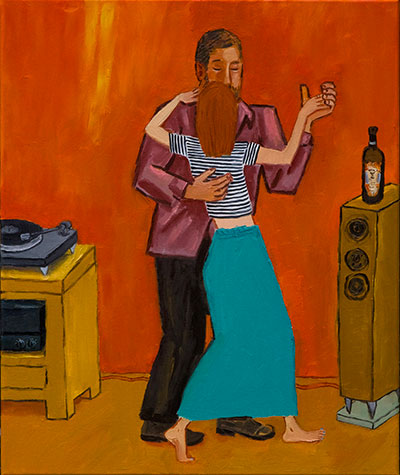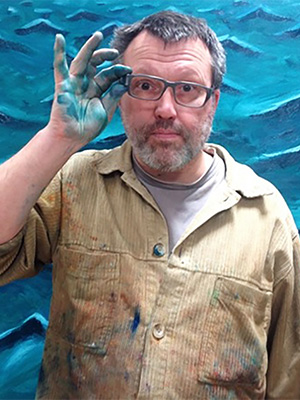To see the juicy side of life
There are many kinds of seeing. Some study reality attentively, taking in every detail; others ignore the world, preferring to analyze a minute segment of events; still others see only a whirl of colors and remember the impression it made on them. Then there are those who try to see the atmosphere of occurrences; their memory only preserves the details in which the emotional content of the seen is condensed. If a person endowed with that kind of seeing happens to be a painter these details are transformed into a system of signs with which he or she can make a painting: something entirely new and governed by its own rules, yet inseparably associated with the sights once imprinted in the artist's memory.
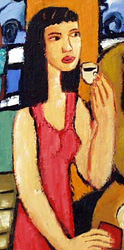
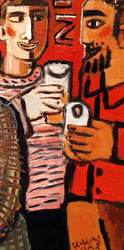
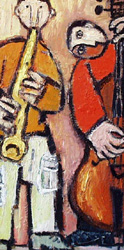
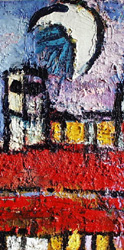
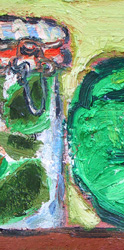
This is the way in which Krzysztof Kokoryn's paintings are constructed; their warm, slightly nostalgic and slightly mischievous air makes them difficult not to like. Born in 1964, Kokoryn, a graduate of the Warsaw Academy of Fine Arts also practices animation and commercial graphics. He is attuned to a succinct and legible establishment of mood through visual form. Using painterly signs – the processed details of reality – he sets up abstract yet readily recognizable situations, heroes and props. His paintings are free of literature; they have more in common with the lyrics to a cabaret song or a barroom ditty which, with their cliched truths, often prove wiser than learned treatises. A legible form, vivid human types usually massive enough to lend a static feel to the painting, well-defined color and a witty, surprising, sometimes nostalgic denouement – are all to be found in Kokoryn's paintings.
The artist is opposed to all pompousness, to grandiose, monumental form, and classical aloofness. A thick dark outline, flat layers of thick paint, large surfaces of pure intense color combine to produce an expressive yet easy-to-read image. The difficulty begins when we want to venture an ultimate interpretation, for the viewer is left with much freedom to weave in his or her own story. Kokoryn himself neither tells nor illustrates any stories. He places his viewers before a kaleidoscope or at the mid-point of a spinning merry-go-round, having them grasp the atmosphere of individual sights before the world rolls on. He tries to contain the whole story within a single gesture, an object, a figure, an association of colors or forms. And so, even though they are circumscribed by their own figurativeness, Kokoryn's works enable the addition of successive verses by the viewer provided he or she learns to look in such a way as to transform the atmosphere of events hidden in the details into a visual sign.
The objects and people in his paintings belong to a warm, colorful world as their visual form suggests. A juicy watermelon, a café umbrella, a ship in a bottle are all attributes of a sweltering summer and a permanent vacation. Musicians, card-players and con-men, acrobats and animals belong to the world of the circus, beachfront bars, and café society. Yet Kokoryn does not put these elements into "real-life stories" from a resort at the height of the season. His paintings have a much broader meaning – they have to do with the sunny and juicy side of a leisurely life, which is amusing at times, but sometimes unfair, one in which a longing for far-off lands is always reflected, and often drowned in the amber abyss of a beer-glass.
It seems that time in Kokoryn's paintings is as still as a summer afternoon, as still as when our memories take on the guise of a sign. Events change their nature to become a graphic form whose significance increases with each experience, each sight, and each event. Remembering never occurs according to plan – signs overlap and blend into one another, and you never know what the end result of such repetition will be. A purple blotch is an elephant, the face of an unknown girl disappears in the shade of an umbrella. There is much playfulness here, a game of visual associations and emotion. At the end of the day, the viewer is faced with a canvas covered with thick paint, and smiles, overwhelmed by the warmth it radiates. Krzysztof Kokoryn's paintings are simply likable.


